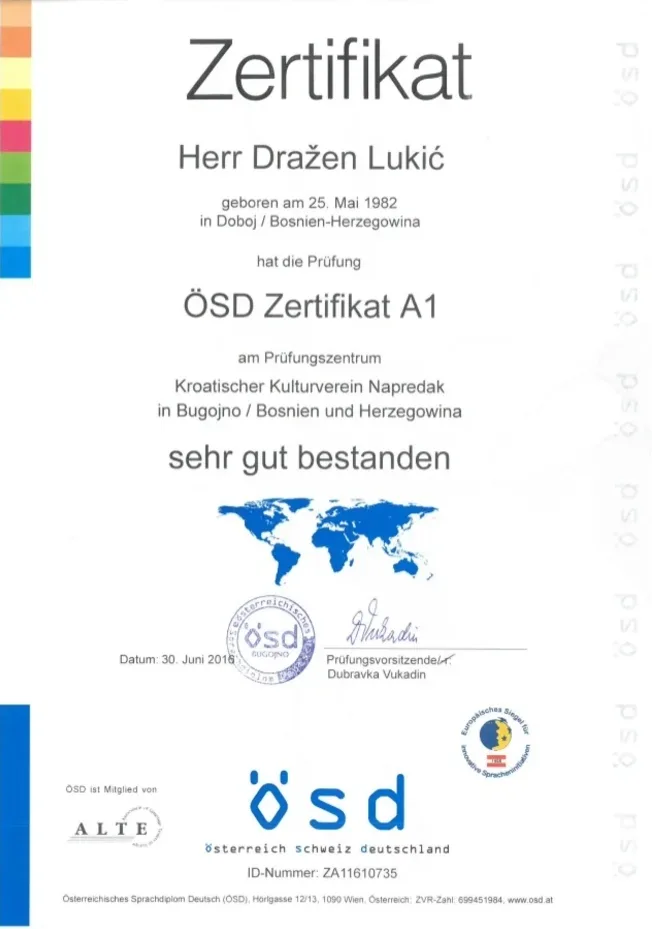14 Clever Ways To Spend Extra Austrian Language Test Budget

Understanding the Austrian Language Test: Importance, Structure, and Preparation
Austria, a stunning country understood for its stunning landscapes, rich history, and dynamic culture, is likewise home to an unique linguistic identity. While German is the main language of Austria, the variations in dialects and subtleties can be rather different from basic German, making language efficiency a vital element for foreigners who wish to live, work, or study in the nation. One significant step in accomplishing proficiency in German as spoken in Austria is the Austrian Language Test (ÖSD - Österreichisches Sprachdiplom Deutsch). This article checks out the significance, structure, and preparation methods for the Austrian Language Test, in addition to frequently asked questions, to assist individuals browse this essential procedure.
Significance of the Austrian Language Test
The Austrian Language Test serves many functions, each highlighting the significance of language efficiency in interaction and combination:
Social Integration: Proficiency in the local language fosters much better interaction and relationship-building, necessary for personal and expert interactions in Austria.
Academic Opportunities: Non-native German speakers wishing to register in Austrian universities need to demonstrate their language proficiency through the ÖSD, guaranteeing they can follow coursework successfully.
Work Eligibility: Many employers in Austria need proof of language proficiency, making the ÖSD an essential accreditation for job candidates.
Residency and Citizenship: For foreigners using for residency or citizenship, evidence of language proficiency is typically a requirement, highlighting the value of understanding the local language and culture.
Cultural Appreciation: Learning the language enhances the understanding of Austrian customizeds, customs, and literature, leading to a deeper appreciation of the nation's cultural landscape.

Structure of the Austrian Language Test
The Austrian Language Test is divided into several levels to assess an individual's command of the German language, lined up with the Common European Framework of Reference for Languages (CEFR). The test consists of the following crucial elements:
Levels of the Test
A1: Beginner level-- Basic understanding of everyday expressions and familiar expressions.
A2: Elementary level-- Ability to interact in simple jobs requiring a direct exchange of information on familiar subjects.
B1: Intermediate level-- Understanding of the bottom lines in clear basic input, including discussions on work, school, and leisure.
B2: Upper-intermediate level-- Ability to connect with fluency and spontaneity while talking about a series of complicated topics.
C1: Advanced level-- Proficiency in understanding a broad range of demanding, longer texts, and expressing concepts fluently.
C2: Mastery level-- Near-native proficiency, comprehending practically whatever heard or read and revealing oneself spontaneously.
Exam Structure
The ÖSD typically consists of 4 main components:
Checking Out Comprehension: Participants read different texts and answer questions to assess their understanding and analysis abilities.
Composing: Candidates compose essays, letters, or reports based on triggers to assess their ability to communicate ideas clearly and efficiently.
Listening Comprehension: This section consists of listening to audio recordings, followed by concerns created to assess listening skills and comprehension.
Speaking: This part involves oral interviews or presentations, where prospects should demonstrate their speaking abilities in real-life situations.
The tests are created to be appealing yet difficult, ensuring that candidates can display their language capabilities accurately.
Preparation for the Austrian Language Test
Getting ready for the Austrian Language Test requires a structured method to make sure efficiency across all four skills: reading, writing, listening, and speaking. Here are numerous preparation methods to consider:
1. Enlist in Language Courses
Language Schools: Many language schools in Austria use courses specifically created to prepare students for the ÖSD. These courses frequently concentrate on the types of materials covered in the test.
Online Classes: Various online platforms offer interactive language lessons, allowing learners to study at their own speed.
2. Experiment Past Tests
Prospects can access previous ÖSD examination documents or sample tests to acquaint themselves with the concern formats and exam structure.
3. Participate In Language Exchanges
Joining language exchange programs or conversation clubs permits prospects to practice speaking with native German speakers and other students, improving their confidence and fluency.
4. Utilize Language Learning Apps
Duolingo: Provides interactive language video games and exercises tailored to various efficiency levels.
Babbel: Focuses on conversation skills, offering real-life dialogues important for verbal interaction.
5. Immerse in the Language
Listen to German Media: Consuming German music, podcasts, and audiobooks helps enhance listening comprehension.
Read Literature: Reading German books, papers, and magazines exposes learners to various writing designs and vocabulary.
6. Hire a Language Tutor
Working individually with a certified language tutor can assist tailor discovering experiences to concentrate on private weaknesses and strengthen particular abilities.
Regularly Asked Questions (FAQs).
Q1: How long does it take to prepare for the Austrian Language Test?
A1: Preparation time varies based upon the person's beginning efficiency level. Typically, it might take a couple of months of constant study to get ready for a specific level.
Q2: Is the ÖSD test acknowledged internationally?
A2: Yes, the ÖSD test is extensively acknowledged as proof of German language efficiency and is often required by universities and employers in German-speaking countries worldwide.
Q3: How much does the Austrian Language Test expense?
A3: The expense of the ÖSD varies depending on the testing center and place. Usually, costs range from EUR150 to EUR300.
geothezertifikat4all.de : Can I retake the test if I don't pass?
A4: Yes, prospects can retake the ÖSD as lots of times as required to attain their preferred efficiency level.
Q5: What resources are best for exam preparation?
A5: Recommended resources include books customized for ÖSD preparation, online courses, language apps, past exam papers, and local language workshops.
Conclusion.
The Austrian Language Test plays a critical role in aiding non-native speakers to incorporate efficiently into Austrian society. Achieving proficiency in the language not only opens doors to instructional and professional opportunities but likewise cultivates a deeper connection with the country's rich cultural heritage. With the right resources and technique, mastering the nuances of the Austrian German dialect ends up being a fulfilling journey toward successful combination.
